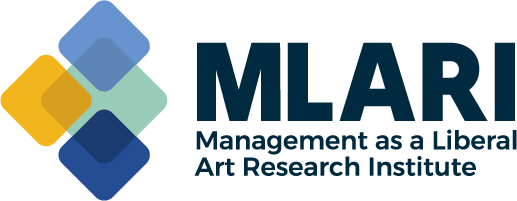How Drucker Can Make You a More Effective Manager
PUBLISHED:
Drucker was different than other management gurus. He didn’t even like to be called a guru but preferred a scientific description of his work: “social ecologist”. This described the study of people and their behavior in organizations. His discoveries and conclusions were important, and far from intuitive. They were powerful and effective. They were also frequently controversial. For example, encouraging a client to sell or close profitable businesses is hardly music to anyone’s ears, but that was the recommendation to Jack Welch when Welch became CEO of General Electric and Drucker became his consultant.
Drucker’s Counterintuitive Advice Brought in Billions
Drucker told Welch to sell or close profitable GE businesses to gain resources to invest in newer businesses that had more potential. This was far from intuitive, and created detractors, and enemies who called Welch “Neutron Jack” after the neuron bomb which left structures standing while it killed the inhabitants. This may have contributed to Welch’s willingness to explain Drucker’s role as a consultant and this situation fully, something that many clients and consultants tend not to talk about but to keep consulting confidential to avoid lawsuits or expose tactics to competitors. Fortunately for us, by mutual agreement Welch released the explanation.
Drucker called this his “abandonment theory” and necessary for successful innovation and expansion. He said that otherwise older businesses, even if still profitable, would tend to consume resources and dominate the efforts of some of his best people while newer businesses, no matter if greater potential, would be ignored.
Welch did as Drucker recommended. Though criticized and berated by the business press and even many academics, he thereby increased GE’s market value from $12 billion in 1981 when he became CEO, to $410 billion on his retirement nine years later. He had made an astounding 600 acquisitions in emerging markets. They brought GE a fortune. When he retired, he was awarded the largest retirement package in history and Fortune Magazine named Welch Manager of the Century.
A Completely Different Approach to Consulting, Too
Drucker also differed greatly in his consulting model from any other management consultant and his method is rarely practiced today. Drucker claimed that his methods of analyzing issues, solving problems, and making recommendations were not based on his knowledge and his experience, but rather his ignorance and lack of experience in a specific business or industry. This required him to ask a lot of questions of his clients to unearth the critical information and encourage the maximum minds in the organization to solve their own problem. He said that his client’s managers were the true experts, not he. This unusual mindset and its procedures for consulting explain a lot.
The Trials and Tribulations of Being a Drucker Client
I once heard that the way Drucker provided his consulting was the most difficult and unusual aspect about being a Drucker consulting client. One client expressed it this way: “We had been accustomed to hiring consultants to whom we told what we wanted done. They sold us on their expertise. Then they went off and returned after a time with piles of data and reports, and before the era of Power Points, stacks of Overheads which represented their work and their detailed solution to our problem. They presented themselves as having unique knowledge which others lacked. It’s not that their solutions flopped, but they were routine. Drucker would begin with asking us questions which we were expected to answer and discuss. In the process, we had to think through the problem. This generated solutions which were frequently unique, and we would have otherwise overlooked. At first this this was uncomfortable, but eventually we began to appreciate his system and found it of great value.”
The Chinese philanthropist and successful billionaire businessman, Minglo Shao, who founded Drucker Schools all over China with Drucker’s encouragement also contributed the money to start and run the MBA-granting, accredited and nonprofit California Institute of Advanced Management of which I served as president for five years. He told me that he would visit Drucker in his home occasionally and Drucker would ask him questions about various issues regarding the developments of his businesses and foundations in China and elsewhere. However, though Drucker asked questions which opened new insights and guided him as what he would do, Drucker never told him how to do anything. He had to work that out himself.
The Most Difficult Action --- To Think!
Although Drucker was aware of many innovative methodologies for analyzing business situations and developing strategies, he made almost no use of them. Instead, he emphasized thinking through every situation on its own. For example, he never taught “portfolio analysis” with their famous quadrants of cash cows, shooting stars, problem children, or dogs as developed by the Boston Consulting Group (BCG) or the GE/McKinsey nine cell version, or any other version of management or business strategy by rote system. He developed few special systems himself. These were integrated with a philosophy of integrity and social responsibility which were required in implementation of everything he did.
“Fad” Systems
Drucker was aware of new fads which became popular, but he was extremely cautious in applying them without thinking through each individually as whether it made sense to employ it in a particular situation.
Although his close association with and analysis of management methods and philosophies in Japan gained him numerous insights, and mangers in Japan frequently adopted many of Drucker’s ideas, he did not instantly jump on the bandwagon of “Japanese Management” when it took hold in the U.S. in the early 1980s. He maintained that any culture had to apply what worked best for it and what worked perfectly in one culture might not work in another. He was highly suspicious of all systems of the kind which Fortune Magazine termed “management by fad”
Example: Participatory Management
When organizations joined the participatory management idea based on Douglas McGregor’s research and his explanation of Theory X verses Theory Y in the early 1960s, Drucker pointed out that McGregor intended that Theory Y management with significant participation of the managed, was an alternative to the more directive style practiced almost exclusively previously. Drucker noted what almost all adopters of Theory Y missed: that McGregor himself had written that his intent was to describe an alternative management style which might give better results under certain circumstances, and that research should be conducted to uncover exactly what these circumstances were, not that participatory management was the universal solution in all situations. For example, participatory management might not be the best during emergencies, when decisions must be made under the pressures of limited time, or when those led were inexperienced and uncertain or were overconfident.
Feelings May be More Important than Numbers
Drucker insisted on measuring just about everything, but the results were to be considered informational, not quantitative analysis for business decisions” made solely by numerical calculation. He avoided decision making whereby the decision was arrived at solely by inputting certain data considered important into a software program, turning on a computer, and having the strategy instructions automatically appear. He pointed out that although one could gather data and develop a program based on thousands of business experiences, even the weather; still the information could be incomplete. Designing software based on extensive data, and inputting data unique to your situation might predict results with some high percentage of accuracy, say 92.5 percent, and still fail in your situation.
Drucker maintained that computer-generated answers were inferior to using the human brain and even making a “gut” decision based on integrating all available information, personal experience, even knowledge of the personnel involved and their leadership and integrity. He noted that personal knowledge or instinct of one single, but vital, factor might well be decisive, and that a computer might never consider it. Also, he reasoned that though a certain program might produce accurate results 92.5 per cent of the time, for 7.5 per cent of the time the results were 100% inaccurate. He recommended that managerial decisions made with “a gut feel” after considering all the information that could be obtained and integrated by the brain not be ignored. This method however should not be employed frivolously and without thought. The brain was a better device than a computer or maybe the better computer of the two.
The application of Drucker’s consulting, or management principles were based on four basic principles:
- Questioning and gathering information from all sources including managers and their subordinates
- Using the human brain rather than “management by fad” depending on the situation
- Gathering all the information possible and the use of computers, but the manager and not a machine or a methodology making the final decision
- Maintaining high integrity and social responsibility in all decisionmaking.
*Adapted from Principles and Lessons from the World’s Leading Management Consultant by William A. Cohen published by LID in 2018 and syndicated internationally.





